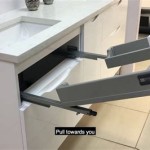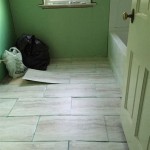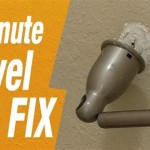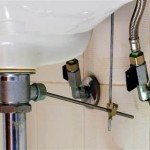How to Clear Standing Water in a Bathroom Sink Drain
A bathroom sink drain that consistently holds standing water can be a frustrating problem, often accompanied by unpleasant odors. The issue is typically caused by a clog somewhere in the drainpipe, preventing proper water flow. While it may seem daunting, clearing a clogged drain can be achieved with a few common tools and techniques. This article will guide you through the steps of identifying the source of the clog and effectively clearing it.
1. Identify the Source of the Clog
The first step is to determine the location of the obstruction causing the water to stagnate. This can usually be identified by the following:
- A slow drain: If water drains slowly, the clog is likely close to the sink drain.
- Gurgling sounds: When water is running or draining, gurgling noises from the sink or other drains indicate a partial clog further down the pipe.
- Visible blockage: If you can see debris in the drain, it is a telltale sign of a clog close to the sink opening.
Examine the drain opening for any obvious debris that may have accumulated. If visible, remove it with your hands or a small tool. If no visible debris is found, the blockage is likely further down the drainpipe.
2. Attempting a Simple Plunge
A plunger is the first line of defense in battling most drain clogs. This method is particularly effective for clearing obstructions closer to the drain opening.
- Prepare the Plunger: Choose a plunger specifically designed for sinks, featuring a cup with a smaller diameter. Ensure the rubber cup is clean and moist.
- Cover the Overflow Drain: If your sink has an overflow drain, cover it with a damp cloth or a plastic bag to prevent air from escaping and reducing the effectiveness of the plunger.
- Create a Seal: Place the plunger over the drain opening, ensuring a tight seal to create pressure.
- Plunge Vigorously: Push and pull the plunger up and down with a firm, rhythmic motion. Continue for about 30 seconds to a minute, then check if water drains freely. If not, repeat the process.
If the plunger fails to clear the clog, it’s time to consider other methods.
3. Utilizing a Drain Snake
A drain snake, also known as a plumbing snake, is a long flexible cable equipped with a hook or auger at its end. It can reach deeper into the drainpipe and break up stubborn clogs.
- Insert the Snake: Carefully feed the snake into the drain opening, rotating it as you insert it to navigate the bends in the pipe.
- Push Through the Clog: Continue feeding the snake until you feel resistance, indicating you have reached the clog.
- Break Up the Clog: Once in place, rotate the snake handle to engage the auger and break up the obstruction.
- Retrieve the Snake: Slowly retract the snake, allowing the clog to be drawn out of the drain.
Be cautious while using a drain snake, as excessive force can damage the drainpipe. If encountering resistance, try a different approach or seek professional help.
4.Chemical Drain Cleaners
Chemical drain cleaners are often used as a last resort, as they can be harsh on pipes and potentially dangerous if used improperly. They typically contain strong acids or bases that break down clogs, but should only be used with caution and in well-ventilated areas. Always read and follow the manufacturer’s instructions carefully, wear protective gloves, and ensure the area is well-ventilated.
- Pour the Cleaner: Pour the drain cleaner according to the instructions, allowing it to sit for the recommended time.
- Flush with Water: After the recommended dwell time, run hot water through the drain for several minutes to flush out the cleaner and remaining debris.
Chemical drain cleaners are not always effective and can damage pipes over time. They should be used sparingly and as a last resort.
5.Seeking Professional Help
If the above methods fail to clear the standing water, it is advisable to contact a professional plumber. They have specialized tools and expertise to diagnose and address the issue effectively. A plumber can identify underlying problems, such as a broken or damaged pipe, which may require more extensive repairs.

How To Unclog A Drain With Standing Water 12 Steps

How To Remove Standing Water From A Clogged Sink

How To Unblock A Sink In 10 Steps Big Bathroom

How To Clear A Stubborn Clogged Drain In Minutes Talmich Plumbing

How Can I Clear A Slow Drain Faq Plumbing By Jake

How To Unclog A Sink With Standing Water Immediate Results Guaranteed

How To Fix A Bathroom Sink That Won T Drain Bfp Bay Area

How To Clear A Clogged Drain Reviews By Wirecutter

How To Unclog A Slow Running Bathroom Sink Drain 10 Options

How To Unclog A Shower Drain With Standing Water Best S
Related Posts







